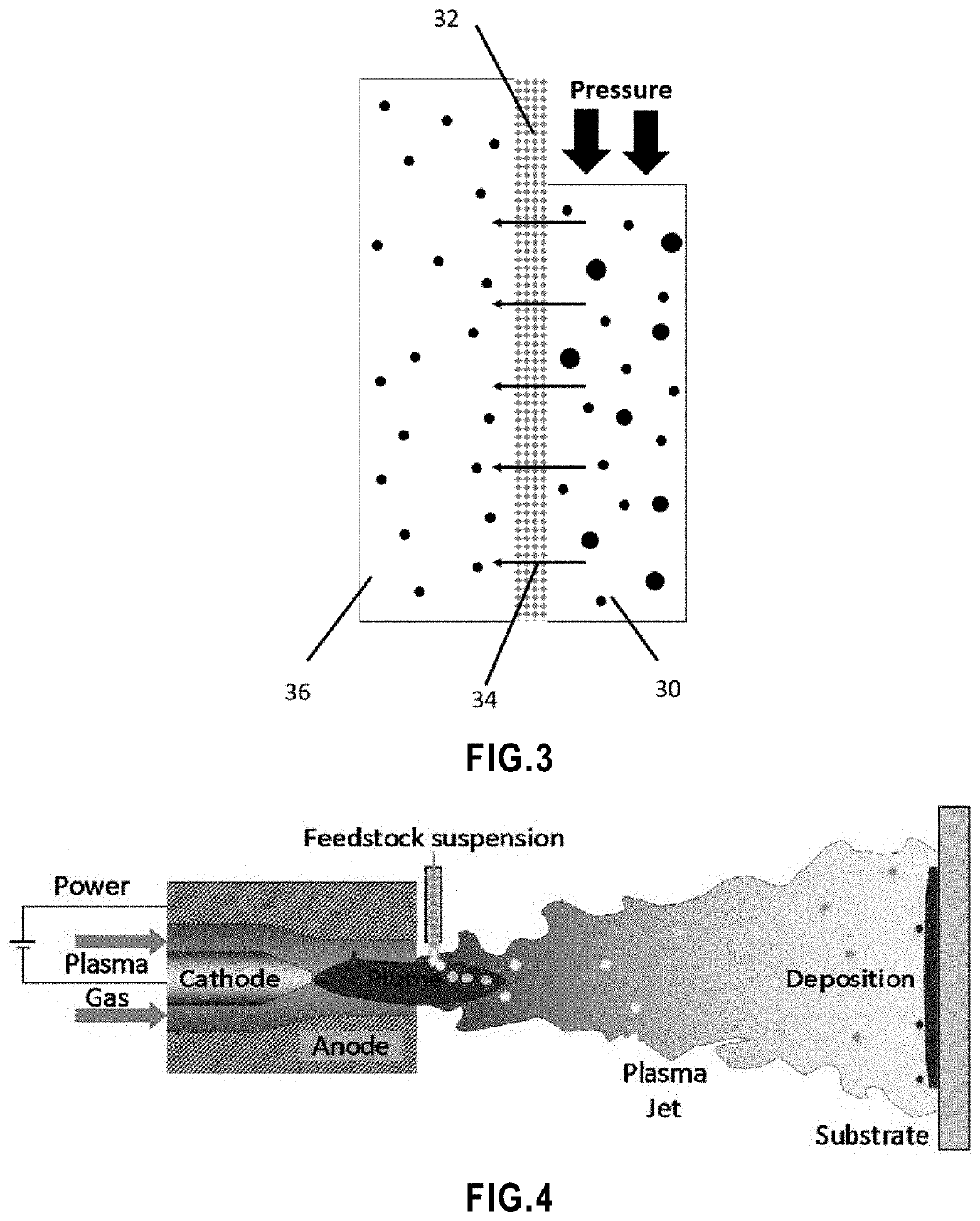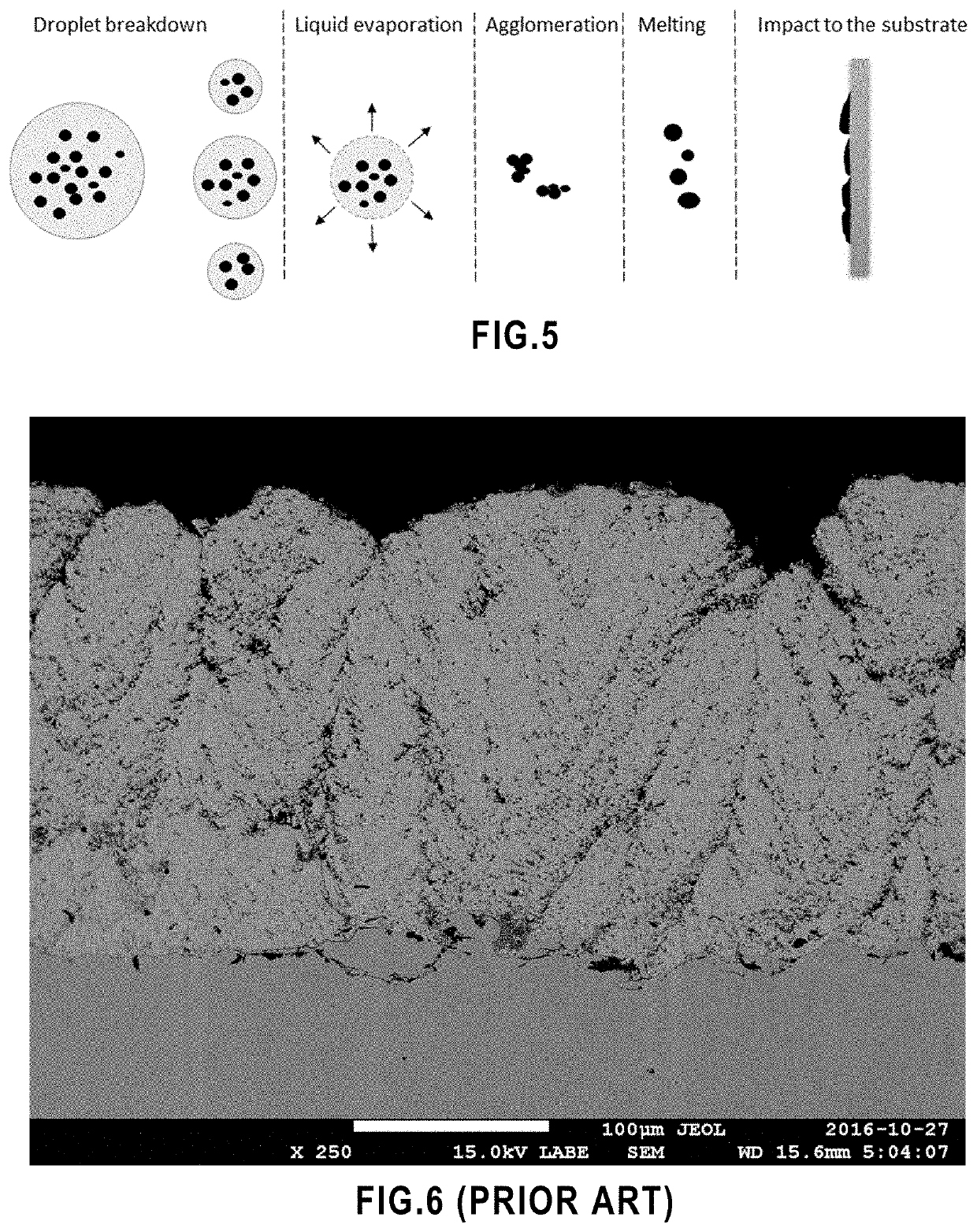Filtration membrane and methods of use and manufacture thereof
- Summary
- Abstract
- Description
- Claims
- Application Information
AI Technical Summary
Benefits of technology
Problems solved by technology
Method used
Image
Examples
example 1
[0233]Below, we report below the fabrication of a ceramic filtration membrane by suspension plasma spraying (SPS). More specifically, we report:[0234]the development of a SPS titanium dioxide (SPS TiO2) membrane,[0235]the evaluation of the impact of different spray parameters and the optimization of some these parameters, and[0236]the characterization of the SPS TiO2 membrane and the evaluation of its performance.
[0237]A porous water permeable titanium dioxide membrane with 14% of open porosity and considerable water flux was produced. In this SPS TiO2 membrane, a network of open pores was generated by accumulation of un-melted and re-solidified particles. In addition, the SPS titanium dioxide membrane exhibited photocatalytic property.
[0238]The SPS TiO2 membrane was generated using sub-micron sized particles in suspension plasma spray, which brought interesting characteristics in terms of the smaller size of the droplets, which led to a membrane with smaller pore size and lower thi...
example 2
Optimization of the Membrane
[0358]The membranes of Example 1 were optimized in order to obtain a higher porosity resulting in a higher liquid flow rate. This was done by increasing the number of un-melted and / or re-solidified particles within the structure.
[0359]The TiO2 powder was 100% anatase. FIG. 42 shows the as purchased TiO2 powder (KS-203A / B, TKB Trading, US). The number-based average powder particle size was 125 nm. the volume-based particle size was D (50)=390 nm as shown in FIG. 43.
[0360]Twelve membranes were sprayed according to Table 13 and Table 14.
TABLE 13Constant spray conditions.TorchInjectorGasCurrentpowerVoltagespeeddiameterNo.of(LPM)(A)(kW)(V)(m / s)(mm)passAr / H2 (60 / 2)500255010.225
TABLE 14Matrix of experiments.SuspensionMembraneSolid contentflow rateSpray distanceno.(%)(mL / min)(mm)120305022030603203070420405052040606204070730305083030609303070103040501130406012304070
Increase of the Porosity
[0361]The porosity was increased from 14% in membrane no. 1 (SPS-W-6 in the ...
PUM
| Property | Measurement | Unit |
|---|---|---|
| Pore size | aaaaa | aaaaa |
| Pore size | aaaaa | aaaaa |
| Length | aaaaa | aaaaa |
Abstract
Description
Claims
Application Information
 Login to View More
Login to View More - R&D
- Intellectual Property
- Life Sciences
- Materials
- Tech Scout
- Unparalleled Data Quality
- Higher Quality Content
- 60% Fewer Hallucinations
Browse by: Latest US Patents, China's latest patents, Technical Efficacy Thesaurus, Application Domain, Technology Topic, Popular Technical Reports.
© 2025 PatSnap. All rights reserved.Legal|Privacy policy|Modern Slavery Act Transparency Statement|Sitemap|About US| Contact US: help@patsnap.com



